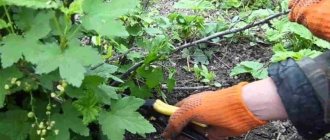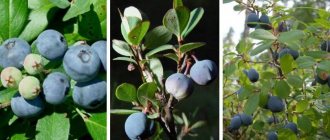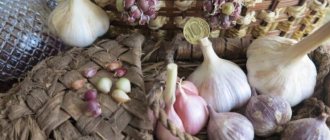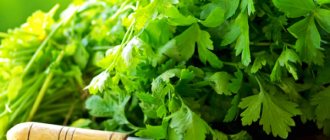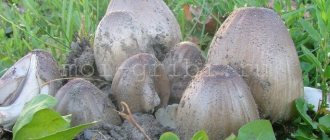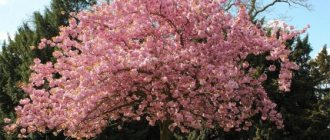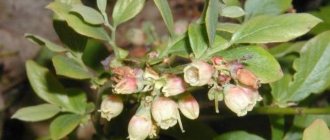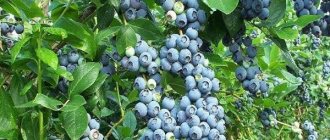For many, blueberries and blueberries are the same thing. Indeed, these berries are very similar to each other and very healthy. They belong to the same Vereskov family. But still, plants and fruits are slightly different.
In this article we will try to figure out what external signs can be used to distinguish blueberries from blueberries, what beneficial properties these berries have, and which of them can be considered more useful.
Berries
What is the difference between blueberries and blueberries? The first thing I want to compare is the berries, which are of main interest. The fruits vary in color, size, shape, and taste.
Blueberries are smaller, darker in color, and have an intense sweet-sour flavor. Blueberries are larger and lighter, the fruits are more fleshy and dense, the juice is watery and colorless. The taste is neutral, unexpressed, sourish, but there are sweet, slightly cloying berries. The skin of both is covered with a bluish coating.
Blueberries do not stain your hands and mouth, unlike blueberries, and do not leave dark marks on clothes. Blueberry stains are difficult to wash off.
One of the differences between blueberries and blueberries is the color of the juice.
Blueberries are round, dark blue, almost black. Blueberries are elongated, large (up to 12 mm), gray-blue in color.
Blueberries are higher in calories - 57 kcal/100 g, blueberries contain only 39 kcal. In terms of the content of vitamins, amino acids, minerals and other substances, the difference between blueberries and blueberries is small.
| Substances/100 g | Blueberry | Blueberry |
| Squirrels | 1 g | 0.74 g |
| Fats | 0.5 g | 0.33 g |
| Carbohydrates | 8.2 g | 14.49 g |
| Water | 88.2 g | 87 g |
| Cellulose | 1.2 g | 2.4 g |
| Ash | 0.3 g | 0.4 g |
| Vitamin A | 0.29 mg | 3 mcg |
| Vitamin B1 | 0.02 mg | 0.037 mg |
| Vitamin C | 16-20 mg | 9.7 mg |
| Vitamin K | 19.3 mcg | 19.3 mcg |
| Vitamin PP | 0.28 mg | 0.42 mg |
Properties
Let's start with calories. There are no scary numbers here. Every hundred grams of product is only fifty calories. Therefore, even for those who dream of losing excess weight, it is perfect. There is no more than thirty percent sugars there. But, you should not use only this ingredient while on a diet. Despite their rich composition, these berries cannot provide the body with all the necessary substances.
You can understand that a fifth of it consists of special acid tannins. There are also a lot of organic acids in the composition. This figure reaches seven percent. There is apple, milk, and lemon. The list of “benefits” includes zinc, fluoride, iodine and fiber.
It is worth absorbing the product with particular enthusiasm because it contains vitamin C (just a cup of fruits will give you twenty-five percent of the daily value), and is also rich in vitamin B. Berries contain the most carbohydrates, five times less proteins, and very little - a little fat. The composition of the seeds is no less interesting. There is a lot to love about them too. For example, for protein.
In general, we can talk about leaves separately. Here you have potassium, magnesium and even iron. By the way, the properties of blueberries are not lost, even if they have been heat treated or thoroughly dried. The same applies to freezing; it will not affect the original useful data of the product. But the appearance suffers greatly after washing, and it begins to deteriorate much faster. So take that into account.
Where and how they grow
In the wild, both berries are found in regions with fairly cold and temperate climates. They grow in wetlands and forests.
Blueberry bushes are low (about 40 cm in height), the shoots are flexible, green, and the berries are single. They usually grow in coniferous forests, under pine and spruce trees.
Blueberry bushes reach 50 cm, sometimes 100 cm, the shoots are woody, the berries grow in clusters. Found in shade and open areas.
The leaves of blueberries and blueberries are similar, ovoid in shape, and approximately the same size.
On the left – swamp blueberry, on the right – common blueberry
Photo of blueberries
Heather family – Ericaceae.
Common names:
blue berry, black berry, dew berry, blueberry, blueberry, blackberry.
Parts used:
fruits and leaves.
Pharmacy name:
blueberry fruits – Myrtilli fructus, blueberry leaves – Myrtilli folium.
Botanical description.
A deciduous shrub that reaches a height of 50 cm. Its faceted green stems branch profusely. Hard leaves with short petioles are ovoid, slightly serrate along the edges, arranged alternately. In their axils sit single or two fused-petaled, spherical, drooping flowers, green, with a transition to red. The fruit is a juicy black-blue spherical berry with a bluish coating with a flattened top and the remains of a calyx in the form of a ring rim. The pulp of the berry is red-violet, the seeds are numerous, small, ovoid. It blooms in May-June, the fruits ripen in June-August. Blueberries bear fruit from 2-3 years. Distributed in the European part of the CIS, Western and Eastern Siberia, the Caucasus and the Far East. Grows in coniferous and mixed forests. Fruits well under the canopy of a not too shady forest on moist soil. According to one of the legends, in the old days, the inhabitants of dense forests - gnomes - lost their home. People learned about their treasures hidden in the ground, and in search of these treasures they dug up the entire earth, leaving the poor gnomes without a home. They found their new shelter under a blueberry bush, which took pity on the unfortunates and sheltered them. In gratitude for this, they spread blueberries all over the world. Blueberries can be found very often. It forms vast clumps in shady forests, peat bogs and wastelands.
Benefits and contraindications
What is healthier - blueberries or blueberries? The differences in composition are minor; both berries contain a set of vitamins and other valuable elements, which makes them healthy. Both of them are used as a remedy.
Blueberry
This berry contains ascorbic acid and antioxidants. Blueberries improve the functioning of the immune system, are a natural antibiotic, and have long been considered very beneficial for the eyes.
In folk medicine the fruits are used:
- when vision deteriorates;
- for disorders of the digestive system;
- for the prevention of cardiovascular diseases;
- with anemia;
- for the treatment of burns;
- with elevated blood glucose levels;
- with urolithiasis;
- for acute respiratory infections.
You should not eat blueberries if you have chronic constipation or pancreatic diseases.
Blueberry
Its beneficial properties are that it has antioxidant properties, increases the ability of cells to regenerate, promotes collagen production, and is indispensable in weight loss diets.
Blueberries are used:
- to normalize the functioning of the gastrointestinal tract;
- for hypertension;
- to strengthen the heart and blood vessels;
- to speed up metabolic processes;
- to improve memory and brain function in general;
- to eliminate eye fatigue;
- with anemia.
Important! Blueberries can cause allergies, so it is not recommended to overuse them. In addition, it leads to intestinal disorders.
Growing
These shrubs take root in the garden plot in different ways. It is very difficult to create the necessary conditions for blueberries. Both blueberries and blueberries should be grown in an open area or in partial shade, on acidic soils, with drainage in the holes.
Blueberry
This berry does not belong to cultivated plants for home and industrial cultivation.
It is rarely cultivated in garden plots. For it you need to create conditions as close as possible to natural ones. You need to choose a place that should be in partial shade, you can also choose a sunny area.
Blueberries are rarely grown in plots, but they can be collected in the forest
Dig the soil to a depth of 60 cm. Add oak leaves, sulfur, and pine needles to the soil.
The diameter of the hole is 50-60 cm, the depth is 50 cm. Place crushed peat mixed with soil in the hole. The distance between the holes is 1.5 m.
Seedlings need to be dug up in the forest. These should be young, low bushes. Mature ones are also suitable, but will need to be shortened after planting.
Another option is to grow seedlings from seeds. Ripe berries need to be mashed in a suitable container and filled with water. Remove what settles to the bottom, place the seeds on a cloth and dry. Plant them in a mixture of peat and sand, cover with film and leave in a bright place at a temperature of 5-10 degrees. They should come up in a month. After two weeks they are transplanted into large pots. After a year you can transfer to open ground.
When planting, seedlings should have an earthen lump. Moisten the edges of the roots with water and place them in the hole, straighten the roots, cover them with soil, compact them, moisten them, and cover them with mulch of pine needles, maple or oak leaves.
For the development of bushes, regular watering and fertilizing with mineral fertilizers without organic matter are required.
Blueberry plantings, if all rules are followed, can bear fruit for up to 20 years.
Blueberry
This berry is actively grown in garden plots. Special varieties have been bred for home cultivation: Taiga Beauty, Patriot, Blue Ray and others. In the Russian climate, early or mid-early varieties are better suited.
The culture loves acidic soils. The diameter of the holes should be smaller than for blueberries. Before planting, you need to destroy the clod of earth with your hands and place the seedlings in warm water for 20 minutes. Then plant them in the ground.
It is not recommended to add manure or ash to the soil before planting; mineral fertilizers should be added. If necessary, acidify the soil. Watering is moderate, it is done in the flowering and ovary formation phase. The soil around the trunk is covered with mulch from peat, pine needles, and oak leaves. If the winter has little snow, the bushes need to be insulated.
Blueberries grow well in garden plots and produce large yields
Description of blueberries
Blueberries are a worthy representative of the Heather family. It is represented by compact berry bushes, which, depending on the variety, can have a height from 30 cm to 1.5 m. One cannot but be surprised by the life expectancy of the crop - up to 90–100 years. The shoots are woody, grow vertically, covered with gray bark and dark green leaves. Due to the thin waxy film, the leaves appear bluish-green.
In May, blueberry plantings are covered with small white or light pink bell-shaped flowers. The berries ripen in mid-summer. The fruits have a round or elongated shape. The skin is elastic, dark blue with a bluish coating. The diameter or length of the berries, on average, is about 10-12 cm, weight - 10-20 g. The crop has a high yield - up to 8 kg of fruit can be harvested from one bush.
Important! A contraindication to eating blueberries is increased blood clotting, since substances contained in the fruit can make it even more viscous.
There are several types of blueberries: swamp (low-growing), narrow-leaved (medium-growing) and garden (high-growing). To obtain a high yield, garden blueberries are grown in household plots, which can boast of a wide variety of varieties. Among the most popular, distinguished by good yields, frost resistance and immunity to diseases, are such as “Bluecrop”, “Patriot”, “Chandler”, “Divnaya”.
Let's sum it up
What makes the difference for gardeners is that blueberries have been cultivated for a long time, breeders have developed many varieties and it is easier to grow them in a summer cottage. Blueberries do not grow well in a garden or vegetable garden and are practically not grown there due to the complexity of the technology. The choice for gardeners is obvious - blueberries.
Both berries are used in cooking. Blueberries have a milder taste, so they are preferable for fresh consumption. For preparing desserts and preparations, it is better to choose blueberries, whose taste is more intense.
General recommendations
Growing berries at home requires the gardener to comply with basic agrotechnical requirements, preliminary preparation of the soil and planting site. The process is troublesome, time-consuming, and the result, unfortunately, does not always live up to expectations. It is believed that the survival of plants that prefer very acidic soils on a site is problematic, and not everyone will be able to cope with creating ideal growth conditions.
In the process of planting and caring for the gardener, experience in growing azaleas or rhododendrons will help.
Related article:
Causes of grape sleeve drying out: how to save



